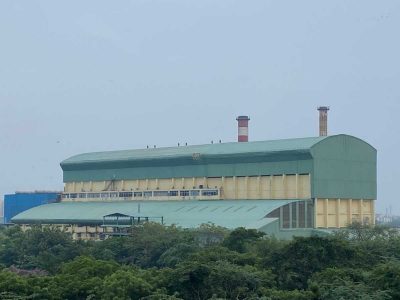Carrying her bag, notebook, and pen, Kajlii walks door-to-door in Delhi’s sweltering heat. A resident of Shawda JJ Colony in North-West Delhi, she is an ASHA worker who starts her day early. After completing her household chores, she heads out for a survey in the nearby community.
Even in harsh weather conditions, Kajlii’s work requires her to go out daily. However, she has recently adopted a new routine. Around 2pm, she takes a break and returns home.
While recording her observations in her register, the 30-year-old shares how she used to cope with Delhi’s heat until some time ago, “I used to struggle with the heat when I came back home from my fieldwork [at 2 pm for a break]. I used to rely on others’ houses to rest.”
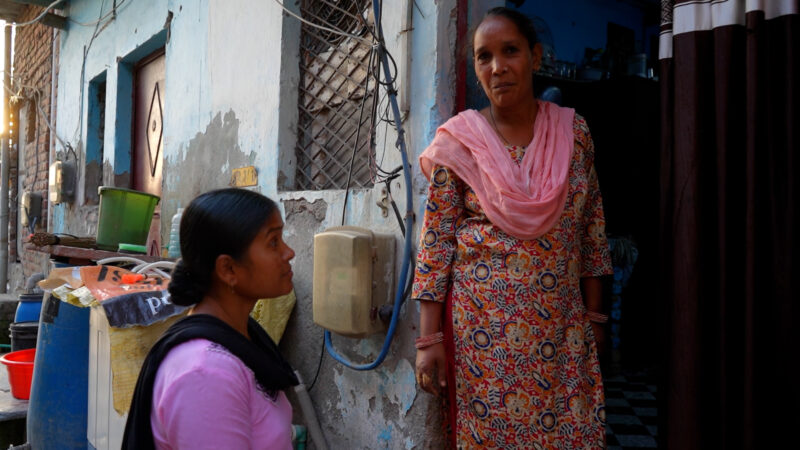
In summer, Delhi experiences severe heatwaves with temperatures soaring as high as 49°C. In 2023, research conducted by the University of Cambridge revealed that around 90% of India falls into the “extremely cautious” or “danger” zone for heat wave impact. The research further emphasised the vulnerability of Delhi to the effects of severe heatwaves.
For countless women like Kajlii, home serves not only as a living space but also as a workspace. Many women in slums, Jhuggi-Jhopri colonies and clusters undertake small enterprises such as stitching, jewellery making, and rolling beedis. Prolonged exposure to extreme heat can lead to heat stress, significantly impacting their productivity.
According to the International Labour Organization (ILO), “Excessive heat during work poses occupational health risks. It limits a worker’s physical functions, capabilities, work capacity, and productivity. Temperatures above 24–26°C are associated with reduced labour productivity. At 33–34°C, a worker operating at moderate work intensity loses 50% of their work capacity.”
Kiran, a resident of the nearby Bakkarwala community, shares a similar story. She resides in a small, poorly ventilated house consisting of a single room and a kitchen. The only sources of ventilation are the two doors.
During her free time, Kiran stitches clothes and makes rubber slippers to supplement her family’s income. She has set up her sewing machine in the kitchen, near a door that opens onto the road.
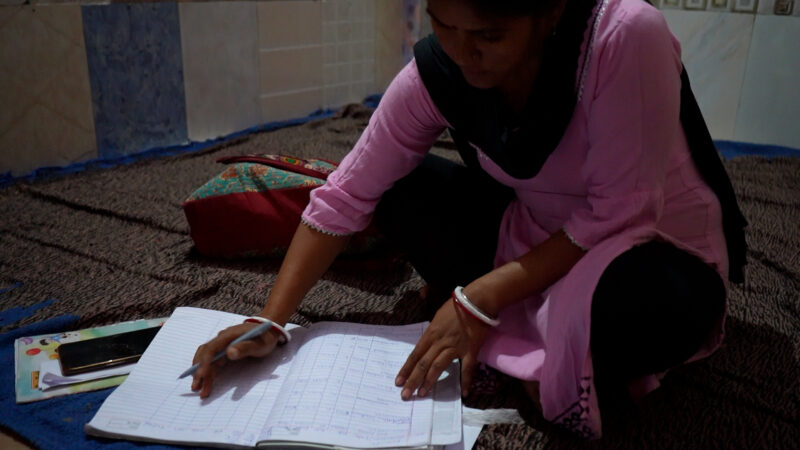
“I earn Rs 700-800 a month from making rubber chappals and Rs 200-300 from stitching falls. Summers get extremely hot here, making it difficult for us to work. We open both the doors for ventilation and use coolers and fans, but the difference is negligible. We pray for rain, hoping for cooler weather. Summers are truly challenging,” Kiran explains.
The rising heat has significantly impacted Kiran’s work, preventing her from earning the expected 700-800 rupees per month. She says that the heat diminishes her productivity.
Impact on children
These women in the communities are not the only ones affected by heatwaves. Children also tend to skip school due to intense heat.
“We make every effort to wake them up in the morning for school. However, since mornings are slightly cooler, the kids fall into deep sleep only after 4 am. Consequently, they struggle to wake up in the morning and end up missing school,” Kiran explains further.
However, this summer may not be as difficult as the previous ones for Kiran. She finds a glimmer of hope after meeting Seema, a Climate Saathi with the Mahila Housing Trust (MHT), an NGO focused on making slums climate-resilient.
Seema, also a resident of the same community, has been a climate warrior for over four years. She works with MHT as a ‘Climate Saathi’ for the Bakkarwala community. One of her responsibilities is to identify houses used as workplaces by both men and women. These houses are then selected for the ‘cool-roof’ initiative.
Under this initiative, MHT applies a special white reflective paint to the rooftops.
They claim that this paint helps in reflecting the heat, thereby reducing temperatures by 2-6 degrees Celsius. Seema has chosen Kiran’s house for this painting project.
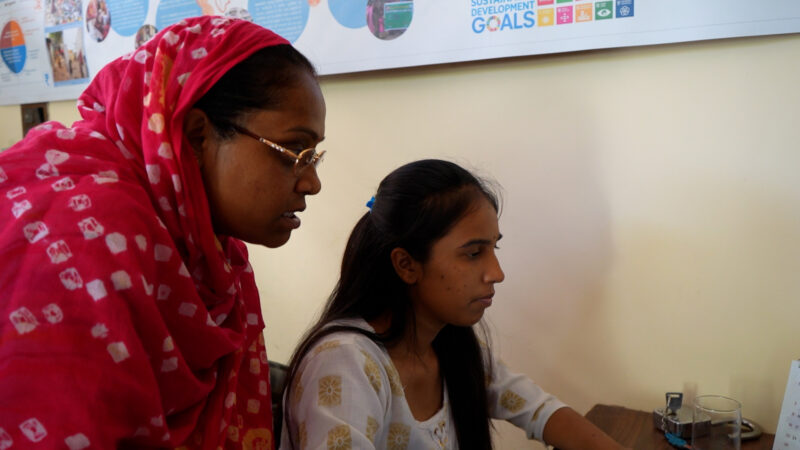
“During summer, many women express concern about the heat affecting their rooftops. Since some of them lack coolers or fans, Beena Behen (Seema’s colleague) suggested this idea to me. No house in Bakkarwala has a ‘cool roof’. Hence, Beena asked me to implement this solution. I chose Kiran because she makes chappals at home and often complains about the intense heat during summer,” Seema explains her decision.
After the rooftop paint application, Kiran’s house will become the first in Bakkarwala community to benefit from this special treatment. Since 2018, MHT has painted several houses in various slums and JJ colonies across Delhi with this white paint.
“I am from Bakkarwala. I believe our community needs significant changes. People here are not well-informed about topics such as heatwaves and climate change. Considering the situation, I strongly feel that a lot needs to be done,” Seema further adds.
Improving productivity
She is one among many ‘Climate Saathis’ working towards making slums climate-resilient through sustainable solutions. Their efforts not only make homes bearable during heatwaves but also improve labour productivity.
Creating awareness about the escalating climate change within the community is another essential aspect of their work.
“We engage with our community members and discuss climate change. Every month, we invite 20-25 women to educate and raise awareness about the changing climate,” Seema shares.
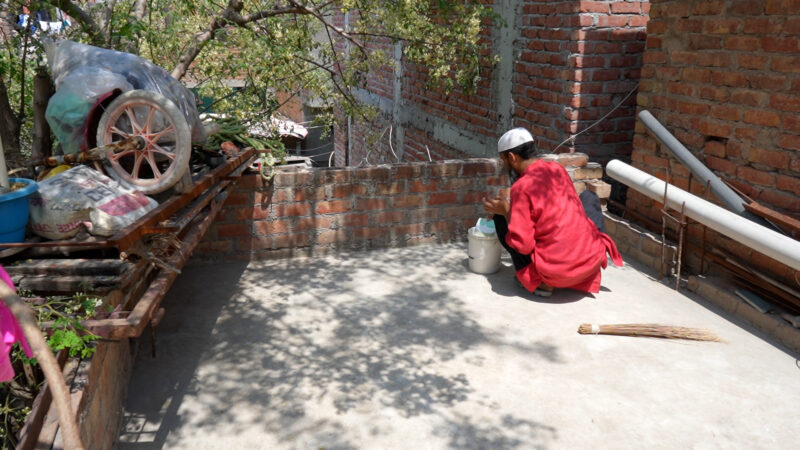
Although they have just begun with the first house in Bakkarwala, there is much work to be done within the community to address climate change. MHT aims to teach the community about maintaining parks, planting trees at home, and other practices to combat the changing climate, Seema envisions.
With the application of the paint, Kiran feels hopeful. “I am hopeful that my house will become cooler. I will be able to work more efficiently, and my children will sleep comfortably at night. Waking up in the morning won’t be an issue anymore,” she says with a smile.
While it may take some time for her to fully understand the impact, the white reflective paint and the efforts of Climate Saathis like Seema have already brought about a positive change in the lives of ambitious women like Kajili, who used to seek shade outside her house during the summer.
“As an ASHA worker, I am constantly on the ground. After completing my fieldwork, I return home to write surveys and reports. Previously, my house would remain unbearably hot throughout the day. However, after climate-proofing my rooftop, I started working comfortably at home in the afternoon without the need to go elsewhere,” Kajili shares while working inside her house.




